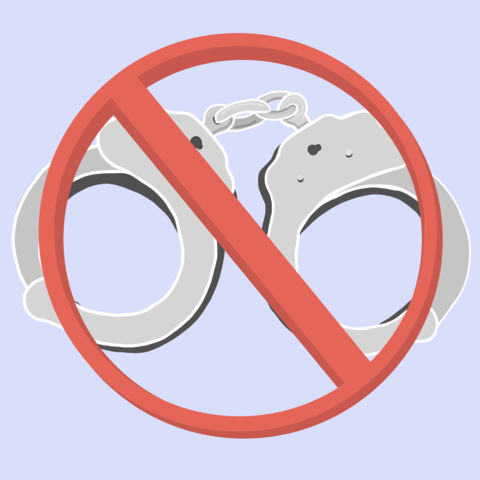Amid calls for Hays County to release inmates from its jail due to COVID-19, officials and local law enforcement announced July 8 they would implement a cite-and-divert program beginning in September. The terms of the new program far exceed the recently approved cite-and-release ordinance implemented in San Marcos and will be great for the community.
The cite-and-divert program is a major step in the right direction toward minimizing arrests, formal charges, judicial action and the stigmatization of those who commit misdemeanor offenses—all things cite-and-release does not fully address.
In April of this year, San Marcos became the first city in Texas to create an ordinance out of cite-and-release, rather than a resolution. It marked a significant change in how law enforcement could work with those committing offenses, requiring officers to give citations for most Class C misdemeanors.
The requirement for officers to issue a citation instead of immediately issuing an arrest is a major benefit to cite-and-release; however, the drawbacks still present are an issue, making cite-and-divert more effective.
Cite-and-release may allow offenders to avoid arrest initially, but they would still be required to get a lawyer, attend court on a later date and pay for court expenses. Additionally, they may not get their case dismissed and instead have to serve time in jail or prison after all.
Cite-and-divert rectifies this deficiency by avoiding arrest altogether and allowing eligible offenders the opportunity to meet with a prosecutor from the Hays County Criminal District Attorney’s Office to determine an alternate course of action.
With the cite-and-release ordinance, a minor offense could lead to stigmatization from being formally charged with a misdemeanor, one an offender would carry for the rest of her, his or their life. It could still impose formal charges on one’s record, putting offenders at risk of losing out on valuable opportunities.
In comparison, the new cite-and-divert program, by offering alternate courses of action, has the potential to allow offenders to avoid this stigmatization. Various diversion methods available to misdemeanor offenders may include educational courses, community service or paying restitution. This is more convenient than going through the official court process when someone is charged with a misdemeanor.
In 2018, due to overcrowding in the Hays County Jail, the county spent $4.3 million outsourcing inmates to other locations across the state, as they could not be kept the County.
While cite-and-release may allow offenders to avoid a night in jail, that does not mean the offender, after court proceedings, would not spend a significant amount of time incarcerated when it is all said and done. This further contributes to the issue of overcrowding.
The diversion portion of cite-and-divert would likely help avoid the overcrowding of county jails, as some offenders would not be confined at all.
Overall, the cite-and-divert program puts Hays County on a path toward a future with less violence between law enforcement and civilians, fewer people in jail, less time for law enforcement spent on petty crimes and fewer people with negative and discriminating records that could potentially destroy their lives.
The next logical step should be putting it in ordinance form, setting the example for other counties and cities across the nation.
- Alexa Nichols is an English literature graduate student.
Opinion: Cite-and-divert addresses cite-and-release shortcomings
Alexa Nichols, Opinion Contributor
July 22, 2020

Cite and Divert Illustration
0
Donate to The University Star
Your donation will support the student journalists of Texas State University. Your contribution will allow us to purchase equipment and cover our annual website hosting costs.
More to Discover










